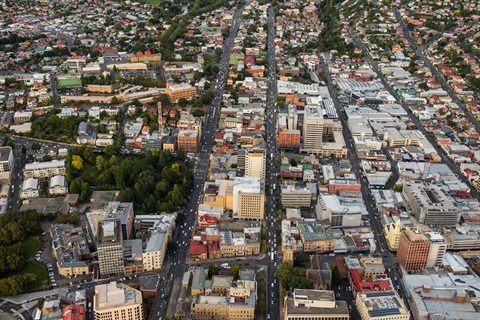Joint statement - Public transport the key to easing commuter traffic
Published on 18 February 2021

The Greater Hobart region has the lowest rate of public transport use per capita of any Australian capital city – a fact that is, sadly, often overlooked when talking about traffic and commuter parking.
The topic has been heavily discussed in the past couple of weeks, prompted by the start of a new school year and the sudden increase in car movements that it inevitably brings.
Like many cities, Hobart has reached the stage in its development where the inner road network is saturated under peak hour conditions. It’s fine to talk about widening roads and building more carparks but the underlying fact is that our city’s geography dictates that there are only so many cars it will ever be able to accommodate at a time.
We know that Hobart is still growing. It’s predicted that, by 2030, there will be an extra 7500 journeys into the CBD each day – the majority of which will originate in the neighbouring local government areas of Glenorchy, Kingborough and Clarence.
Let’s imagine for a moment that all 7500 additional trips are taken by car. The resulting congestion would extend across the Greater Hobart network.
To put it into perspective, to meet the additional parking demand would require four new Argyle Street carparks to be built and 3000 extra suburban car spaces – by no means a practical solution.
Even if the land and resources existed to make it happen, as those thousands of vehicles poured into the city network at the same time each day, the city would be become gridlocked, adding to travel time and the stress of commuters.
Thankfully, this outcome can be avoided.
One of the goals of the Hobart City Deal is to increase the public transport mode share from 6.8 per cent (2016) to 10 per cent of total trips into and out of Hobart by 2029.
This is a modest increase. When Brisbane was facing similar challenges more than a decade ago, its public transport usage was increased from approximately 8 per cent to 15 per cent of total travel in just five years.
But such an achievement relies on improvements to our city’s public transport services. That includes expansion of bus services, making them more affordable, and improving the commuter experience; and introducing other modes of transport like light rail and ferry – initiatives that are already identified under the City Deal.
Under the Greater Hobart Act, the local and state governments are collaborating to supply our Greater Hobart population with choices that better meet their needs.
However, there are steps we can take to start changing the trend now.
Every person who chooses to leave their car at home and travel to work by another means equates to one less car on the road at peak hour and one less car taking up a parking space.
As more commuters step away from their cars, the difference will become evident through improved travel times for all commuters and better access to parking for those who need it.
As demand for bus services increases, so does the pressure to improve services, in turn leading to a better and more efficient public transport network.
On a positive note, Hobart already has the highest rate of active travel commute per capita of the capital cities and we’re taking steps to further enhance this by improving pedestrian and cycling corridors to make them safer and more convenient. Like with public transport, every person who turns to active travel for their commute is one less car on our already saturated road network.
Creating an efficient city that can cater for growth while maintaining a vibrant amenity and enviable lifestyle can be done. But it does require a willingness to challenge the old ideals and be part of a fresh approach. Let’s not wait until it’s too late.
Jointly signed by:
Hobart Lord Mayor Cr Anna Reynolds; Mayor of Clarence Ald Doug Chipman; Mayor of Glenorchy Ald Kristie Johnston; Mayor of Kingborough Cr Dean Winter; and Tasmanian Transport Minister Michael Ferguson